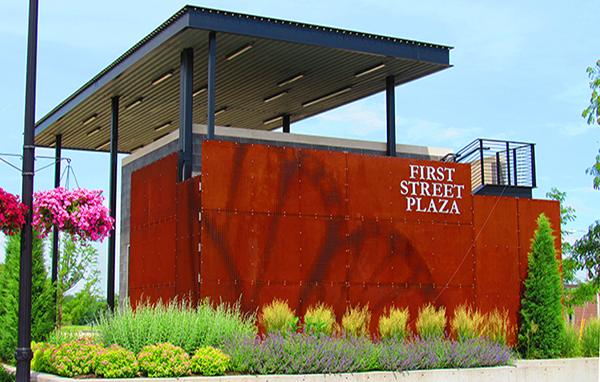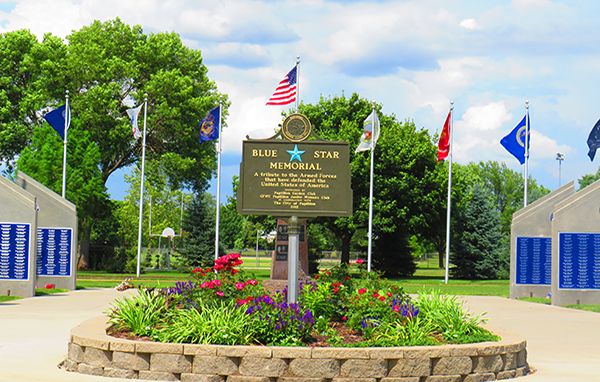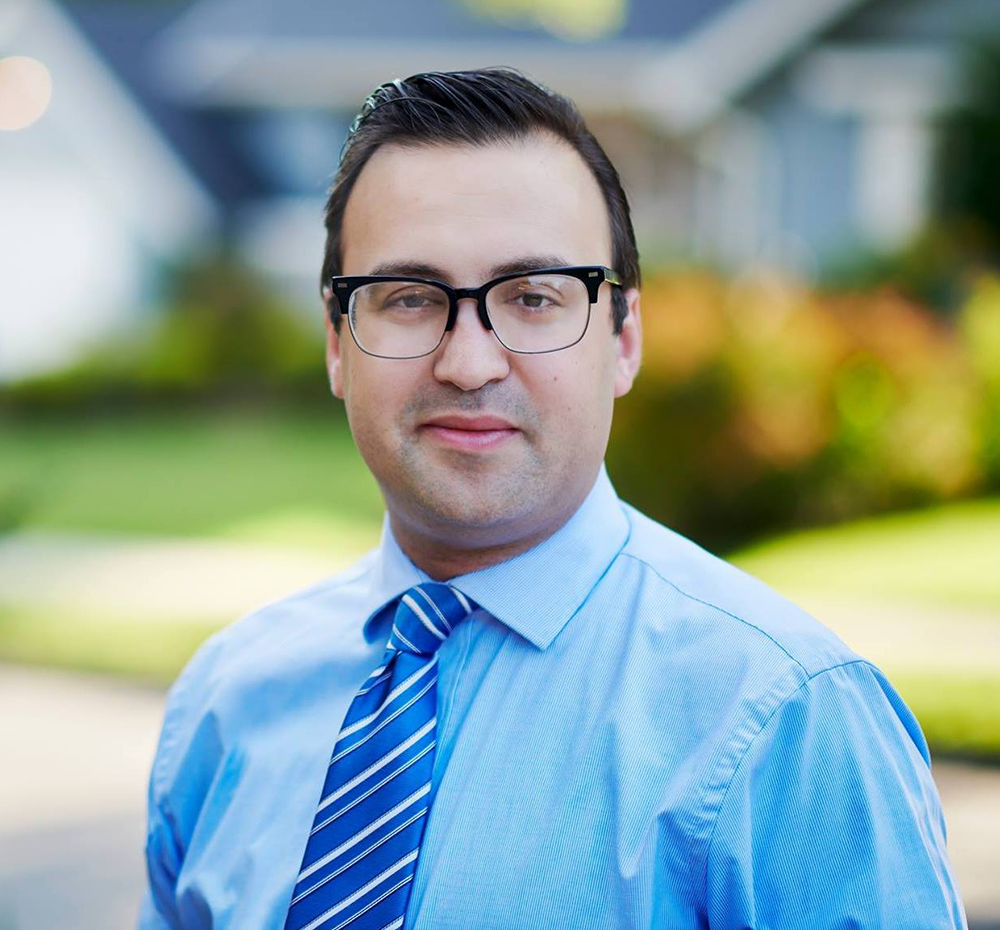PapillionBusinesses.com Interview with Sarpy County Museum’s Executive Director, Ben Justman, Part One
I already know a little bit about you and the museum but would like to know more about you, the museum, the new place, the railroad collection.
My name is Ben Justman. I’m executive director at the Sarpy County Museum and have been since 2010. So, it’s been 13 years at this point.
I am not a native Nebraskan, but please don’t hold that against me. I’m originally from the Chicago area, but I’ve always had a passion for history, [and] went to school for this with a bachelor’s and a master’s degree in history. I have Museum Studies certifications as well. Then did a lot of volunteering and interning. That taught me about the inner workings of a nonprofit and the museum and how that all functions.
So, I was involved with the Museum of Science and Industry in Chicago. As an undergrad, I had a wonderful internship experience at the Imperial War Museum in London. And then I’ve also been involved in a lot of smaller local history museums, very similar to the Sarpy County Museum. And so, when I finished grad school, I figured I wasn’t going to stay in the Chicago area. There are some challenges, obviously, there and trying to find a position in the nonprofit world. And so, I figured I’d end up at a place like Nebraska, and I’m really glad I did.
There’s a wonderful blend in Sarpy County of community history, effectively public history. So, the history of people and we span that from really arrows to aerospace. And then of course, we have Offutt Air Force Base. So, there’s an excellent military history here as well. And at the museum here, there’s been a lot of opportunity to display that, collect that. I like to say that the Sarpy County museums [are] the Smithsonian for Sarpy County. So, for county size museum, we’re not bad in size. We’re just a little outdated for the growing- the changing times and the growing county. The building here is about 6000 square feet. We’ve been here since 1977.
What else can I tell you? We have, I think, excellent, excellent archives. We’ve got a rich history of local newspapers. Some of those have been digitized. We have more than a million photographs, and we have photo negatives. The vast majority of those have been digitized. So, we have excellent photo collection. We have wonderful county records. So, we have district court records that go back to the beginning of Sarpy County. People squabbling over lands, farm foreclosures in the 1930s, prohibition related records in teens and 20s. It’s really a slice of life.
We’ve got about 7000 immigration records. Each one of those tells a story of an individual and their struggles to become an American citizen. We’ve got marriage records from the 19th century. We’ve got historical maps. I’m probably leaving out five or six wonderful collections that we do have within the back room of things. But yeah, there’s a lot of source material here to tell some great stories and we have over the last 13 years.
The organization has existed since 1934. So, we were founded in the height of the Great Depression. Community members came together at that point and looked and saw it had been far enough away from their pioneer days [so] that generation was gone or really on their way out and things needed to be documented. And so, from 1934 to next year will be 90 years as our organization. We’ve grown and as part of that growth through the years here little by little, it takes really takes a village. We’re looking to build a new facility.
So, during COVID, we were approached by a retired railroader. His name is Bill Wimmer, his wife Judy, and they approached us and said, “We’re looking to downsize. We’ve amassed a significant collection of railroad materials, is this something you’d be interested in?” And absolutely! I mean, the railroad and Sarpy County’s history are interwoven on a number of areas. He’s gotten everything from railroads, high end model railroads, dining car china, to posters, documenting kind of that artwork of the railroad. He’s got 100-year-old handcarts. Basically, tons of engineering equipment – anything and everything. It’s a significant collection.
And so, we obviously- take a look around- we don’t have the space for that here. We struggle with space, as it currently is. We’ve struggled with space for the last two plus decades. And so, with that collection, plus the fact that we already had an issue already built some of the foundation to enter kind of into that new era of we need to make this happen. Things have to happen. If Sarpy County is growing, we need to set aside a small space to make sure that growth is documented and sustained into the future. So, we brought on some extra help in that process. We did a very thorough site selection and have plans now to build a 28,000 square foot museum at 90th and highway 370 [in Papillion]. It’s got high visibility. It’s in the center of the county. We can serve all five communities and make sure that each community’s history has more than enough space, which is an issue we run up against today.
How do you keep up with all the documentation and everything else? There’s so many pieces to the museum.
Yes. So, how do we preserve and collect what we do? It’s pretty common. Museums always have a backlog of things to do. So, one of the initiatives we’re trying to that end that I firmly believe in, is to make our backroom more accessible. It doesn’t necessarily always mean just put it online. Online has a place, 100%, but it means to digitize documents that are incredibly frail and falling apart. It means to transcribe brittle, cursive documents that most people in society will probably have trouble reading at this point.
Because it’s cursive?
Yes, but it’s a two-fold. I mean, surprisingly, people do still read cursive, but there tends to be- even younger people- there tends to be I think a myth that penmanship days of yore was somehow beautiful. I can tell you, depending on who took those extensive court records, those extensive notes. Some of that cursive is very legible. And some of it you really have to struggle with and if it’s poor penmanship on a piece of thin onionskin paper that’s falling apart-all the reason to carefully digitize that and at the very least, transcribe it so that it can be it can be documented and searchable.
For that matter too, cursive no matter, if there’s some technology that’s changing this but it’s very slow to work its way down, but cursive is not. Digitized cursive is not searchable, especially when the penmanship is poor, which means we’re still relying on the same old style of monks from you know, 500 years ago, transcribing records. Except now we’re doing it on a on a computer, but it has to be done one word at a time. So, that’s digitizing photos. There’s ongoing efforts here to make that information more front and center because if things are buried in the archives, and a professional historian like myself has trouble finding them, or it takes time and it takes effort, the community is never going to be able to unlock some of those secrets.
What type of research projects and people come in?
One that I think has been neat recently in the last couple years… so it’s a mixed bag… Let me let me backpedal. I’ll talk about it’s the one I really find interesting. When people come in and they want to find out little things you know, maybe some family history, trying to connect some of the dots maybe about what was you know, in a piece of property before it was there understanding the changes in the land, doing research about let’s just say like high school sports some of those sort of aspects, are some of our requests, or I have a gentleman who wants to be [here] tomorrow to talk about the history of streetcars in urban Sarpy County, which is an interesting topic as we think about the conversation going on in Omaha about the streetcar.
But I think one that was a little more in depth that I found interesting is we had a researcher come in wanting to research about the history of apples and Sarpy County and the history of how that has changed over time. We have to think about you know, apples, and we think Nebraska City here, but Sarpy County had a tremendous amount of orchards. This was at a time when the landscape was agrarian. And that is still in the landscape, but changing drastically from rural to urban. When we think about farming today, it’s typically corn and soybeans. At least in this area, but at one time there were a number of orchards here and a number of varieties of apples. And that’s changed drastically.
When did the great freeze happened that knocked out many of the apple trees in Nebraska?
She would be the one to talk to you about that. We’re hoping to have her present her findings in a public program and we’re highlighting it a little bit more. I haven’t slotted it in for a time yet. But there’s a couple avenues we’re trying to figure out. Because I’d love to have her share some of her findings. She’s mentioned that there was a big agricultural blight. But we had more than 100 types of apples in Sarpy County and they were used for all different things; cider and eating and baking and so on and so forth. So, that’s been an interesting project I haven’t done what we are archives have been available to somebody who then in turn will share some of that information and ideally a more well-rounded community that understands where we’ve been as a society,
More treasures to uncover and put the missing pieces together.
Yes, absolutely.
End of Part One
Other parts in this series:
Sarpy County Museum Interview: Ben Justman, Executive Director of the Sarpy County Museum, Part Two
https://papillionbusinesses.com/blog/papillion-interview-ben-justman-executive-director-of-the-sarpy-county-museum-part-two/
Sarpy County Museum Interview: Ben Justman, Executive Director of the Sarpy County Museum, Part Three
https://papillionbusinesses.com/blog/sarpy-county-museum-interview-executive-director-ben-justman-part-three/




